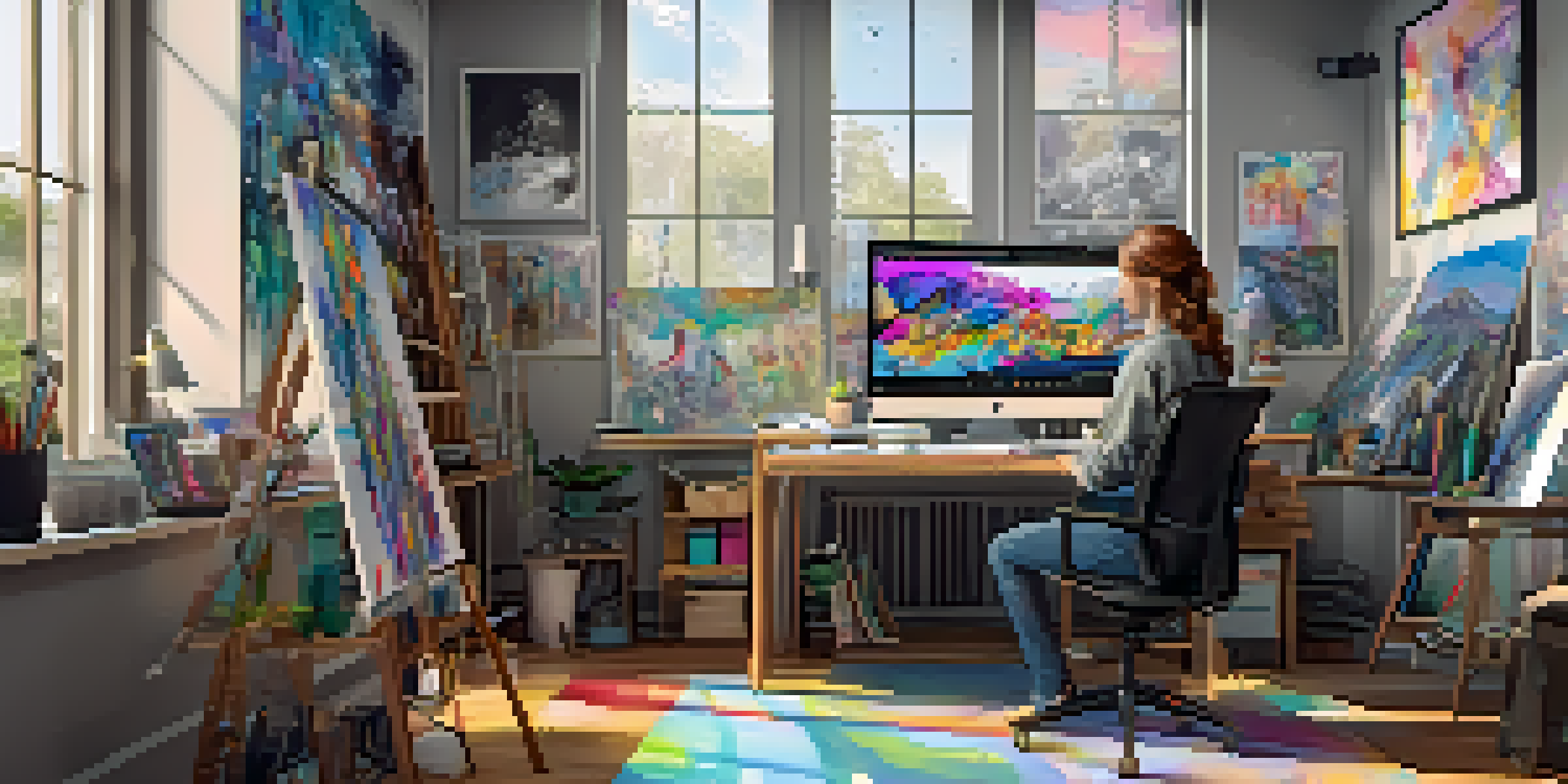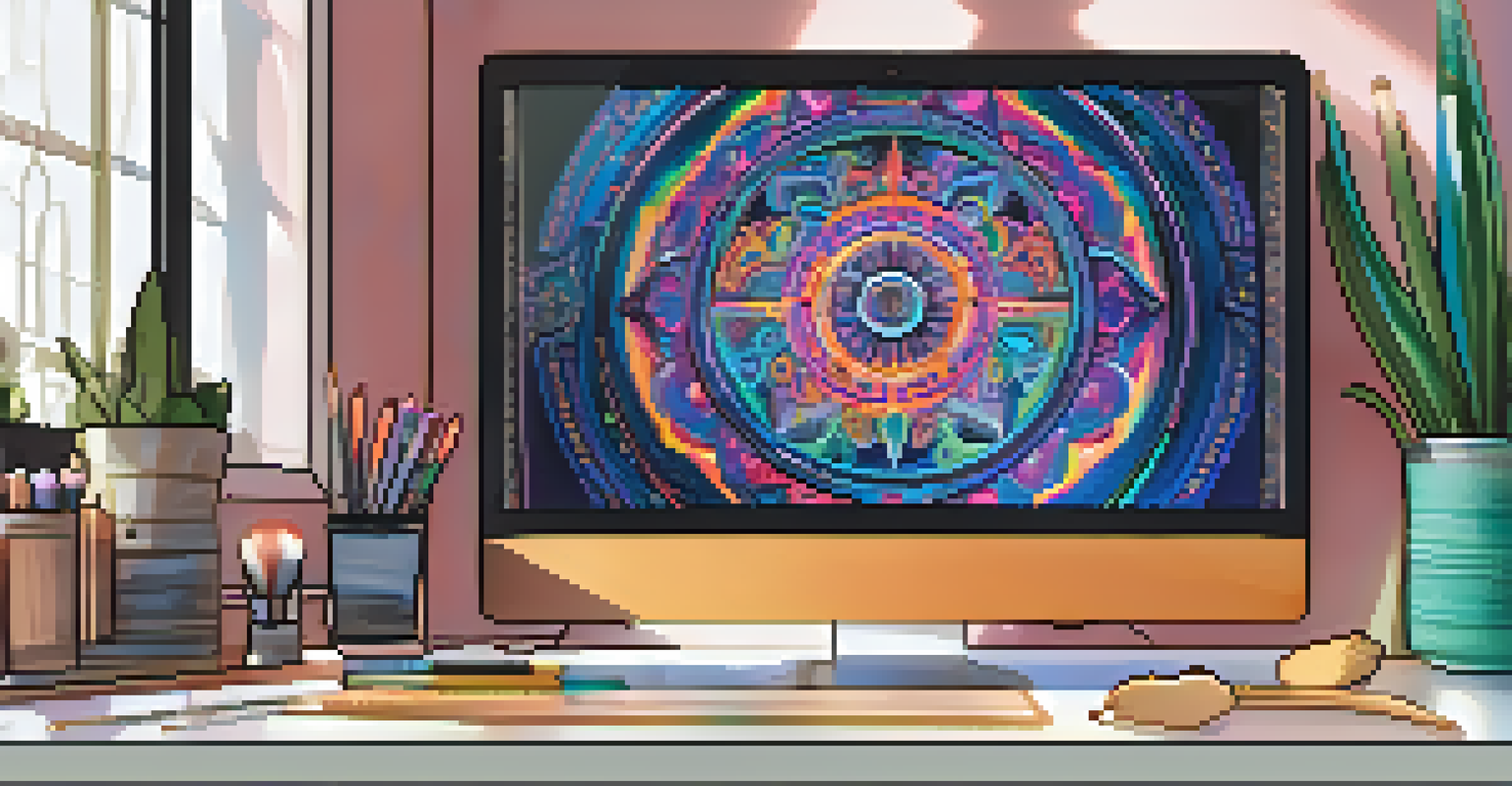NFTs and Intellectual Property: Protecting Gig Economy Creatives

Understanding NFTs: A Simple Introduction
NFTs, or non-fungible tokens, are unique digital assets that represent ownership of a specific item or piece of content, such as art, music, or videos. Unlike cryptocurrencies like Bitcoin, which are interchangeable, each NFT has distinct value and characteristics. This uniqueness makes them particularly appealing to creatives in the gig economy who want to monetize their work.
NFTs are a way to give creators a new way to monetize their work and connect with their audience directly.
Think of NFTs as digital certificates of authenticity that can prove who created a piece of content and who owns it. They are stored on a blockchain, a secure digital ledger that ensures transparency and traceability. This technology has opened new avenues for artists, musicians, and other creatives to showcase their work and retain ownership.
However, while NFTs offer exciting opportunities, they also raise questions about intellectual property rights. Understanding how to navigate the intersection of NFTs and intellectual property is crucial for gig economy creatives looking to protect their valuable work.
The Gig Economy: A New Era for Creatives
The gig economy has transformed how creatives work, allowing them to take on freelance projects, sell their art online, and connect with audiences worldwide. This shift has empowered many artists to become entrepreneurs, but it also means they face new challenges in protecting their intellectual property. With numerous platforms and marketplaces available, it's essential for creatives to understand their rights.

In this fast-paced environment, many gig workers may not have the resources to seek legal advice or navigate complex copyright laws. This is where NFTs can play a vital role, providing a straightforward way to establish ownership and control over their creations. By minting their work as NFTs, artists can ensure they receive credit and compensation for their efforts.
NFTs Enhance Ownership for Creatives
NFTs provide a unique digital proof of ownership, allowing creators to establish and control rights over their work.
Moreover, NFTs can help creatives build a direct relationship with their audience, allowing them to sell their work without intermediaries. This not only enhances their income potential but also gives them more control over how their creations are used and shared.
Intellectual Property Basics for Creatives
Intellectual property (IP) refers to the legal rights that protect creations of the mind, including inventions, designs, and artistic works. For gig economy creatives, understanding IP rights is essential to safeguard their work from unauthorized use. This includes knowing about copyright, trademarks, and patents, each serving different purposes in protecting creative output.
In the world of digital art, ownership and authenticity are everything, and NFTs provide a way to establish both.
Copyright automatically protects original works of authorship, allowing creators to control how their work is reproduced or distributed. However, many creatives may not realize that simply creating a piece does not guarantee protection; registration can strengthen their claims. Trademarks, on the other hand, safeguard brand names and logos, while patents protect inventions and processes.
By being aware of these basics, creatives can take proactive steps to ensure their work is legally protected. This knowledge is especially critical in the digital landscape, where copying and sharing content is as easy as a click of a button.
How NFTs Can Enhance IP Protection
NFTs offer a unique approach to intellectual property protection by providing a digital proof of ownership. When a creative mints an NFT, they create a permanent record on the blockchain that includes details about the work, such as the creator's identity and the date of creation. This timestamped evidence can be invaluable in proving ownership and defending against infringement claims.
Additionally, NFTs can incorporate smart contracts—self-executing contracts with the terms of the agreement directly written into code. These smart contracts can automatically enforce rights, ensuring that creators receive royalties every time their work is sold or resold, a feature that traditional copyright laws may not easily support.
Protecting IP in the Digital Age
Understanding intellectual property rights is crucial for gig economy creatives to safeguard their work from unauthorized use.
By leveraging NFTs, gig economy creatives can not only protect their work but also establish a sustainable income model. This innovative approach empowers artists to maintain control over their creations while reaping the rewards of their talent.
Navigating Legal Challenges with NFTs
While NFTs provide exciting opportunities, they also come with legal challenges that creatives should be aware of. For instance, the process of minting an NFT may not automatically confer copyright ownership, especially if the creator uses someone else's work without permission. This highlights the importance of understanding the legal landscape surrounding NFTs and intellectual property.
Moreover, the decentralized nature of blockchain technology can complicate enforcement of IP rights. If someone infringes on a creator's rights by minting an unauthorized NFT, the process of claiming ownership can become complicated. Creatives must be prepared to navigate these challenges and seek legal guidance when necessary.
It's crucial for gig economy creatives to stay informed about evolving laws and regulations related to NFTs and intellectual property. By doing so, they can better protect their rights and adapt to the changing digital landscape.
Case Studies: Successful NFT Creators
Several creatives have successfully leveraged NFTs to protect their work and enhance their income. For example, digital artist Beeple made headlines when he sold an NFT artwork for a staggering $69 million. This sale not only showcased the potential of NFTs but also highlighted the importance of securing ownership and payment for original creations.
Another notable example is musician 3LAU, who sold his album as NFTs, allowing fans to purchase unique versions of his work. This innovative approach not only generated significant revenue but also fostered a deeper connection with his audience. These success stories demonstrate the transformative power of NFTs for gig economy creatives.
Navigating Legal Challenges with NFTs
While NFTs offer new opportunities, creatives must be aware of the legal complexities and potential challenges they may face.
By learning from these pioneers, other creatives can explore how to effectively use NFTs to safeguard their intellectual property and create new revenue streams. The possibilities are endless, and the landscape is ripe for innovation.
Future Trends: NFTs and the Creative Landscape
As the digital landscape continues to evolve, NFTs are likely to play an increasingly prominent role in the creative economy. More artists, musicians, and writers are exploring ways to incorporate NFTs into their work, leading to new forms of expression and monetization. This trend may reshape traditional concepts of ownership and value in the creative world.
Moreover, as consumer awareness grows, the demand for NFTs is expected to increase, pushing platforms to improve their offerings and make the process more accessible for creatives. This shift could empower even more gig economy workers to take control of their intellectual property and monetize their creations effectively.

Ultimately, the future of NFTs in the creative landscape is bright, with endless possibilities for innovation and growth. By embracing these changes, gig economy creatives can not only protect their work but also thrive in an ever-evolving digital world.